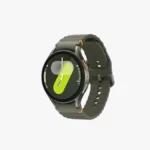The healthcare sector has always been at the forefront of adopting new technologies to improve patient outcomes, increase efficiency, and reduce costs. With the rapid advancements in technology in healthcare, there has been a surge of innovative solutions in healthcare that are changing the way we approach diagnosis, treatment, and care.
From artificial intelligence and virtual reality to wearables and telemedicine, the new technologies in healthcare are transforming the industry and creating new opportunities for patients and healthcare professionals alike. In this article, we will explore some new technology in healthcare that are making waves and shaping the future of technology in healthcare delivery.
List Of New Technology In Healthcare
-
Artificial Intelligence (AI) and Machine Learning (ML)
AI and machine learning is revolutionizing technology in the healthcare industry by making it possible to process vast amounts of data quickly and accurately. AI and ML algorithms can analyze medical images, predict patient outcomes, and help healthcare professionals make informed decisions. One of the most significant applications of AI and ML in healthcare is precision medicine. This approach uses patient data to create personalized treatment plans based on a patient’s genetics, lifestyle, and environment.
-
Telehealth
Telehealth, also known as telemedicine, is a rapidly growing trend in healthcare. It allows patients to receive medical care remotely via video conferencing, phone calls, or messaging. Telehealth can improve patient access to care, reduce healthcare costs, and increase efficiency. Telehealth has been particularly beneficial during the COVID-19 pandemic, as it allows patients to receive care without leaving their homes, reducing the risk of infection.
-
Wearable Technology
Wearable technology in healthcare, such as smartwatches and fitness trackers, is becoming increasingly popular. These devices can monitor vital signs, track fitness levels, and even detect early signs of diseases. Wearable technology in healthcare can help professionals monitor patients remotely, improve patient outcomes, and reduce healthcare costs.
-
Virtual and Augmented Reality
Virtual and augmented reality technology in healthcare to improve patient outcomes and reduce healthcare costs. These technologies can simulate medical procedures, provide medical training, and even offer immersive experiences that can reduce patient anxiety and stress. Virtual reality treats conditions such as post-traumatic stress disorder (PTSD), anxiety, and chronic pain.
-
Blockchain
Blockchain technology in healthcare is used to improve patient privacy, security, and data sharing. Blockchain can create a secure and transparent patient data record, reducing the risk of data breaches and improving patient outcomes. Blockchain can also improve the efficiency of healthcare systems by reducing administrative costs and streamlining processes.
-
3D Printing
3D printing is used in healthcare to create customized medical devices, prosthetics, and organs. 3D printing can reduce the cost of medical devices and increase accessibility, making healthcare more affordable and accessible. 3D printing can also reduce the time it takes to produce medical devices, improving patient outcomes and reducing healthcare costs.
-
Genomics
Genomics is the study of genes and how they interact with each other and the environment. Genomics is used in healthcare to develop personalized treatments and improve patient outcomes. By analyzing a patient’s DNA, healthcare professionals can create personalized treatment plans based on a patient’s genetic makeup, reducing the risk of adverse reactions and improving patient outcomes.
-
Internet of Things (IoT)
The Internet of Things (IoT) refers to a network of devices connected to the Internet that can communicate with each other. In healthcare, IoT devices can monitor patient vital signs, track medication adherence, and even detect early signs of disease. IoT can help healthcare professionals monitor patients remotely, reduce healthcare costs, and improve patient outcomes.
Conclusion
The healthcare sector has witnessed significant technological advancements in recent years, and the eight new technologies discussed in this article are a testament to this fact. These technologies have the potential to revolutionize healthcare by improving patient outcomes, enhancing healthcare delivery, and reducing costs. However, their successful implementation depends on various factors, such as regulatory approvals, access to funding, and stakeholder collaboration. As new technology in healthcare continues to evolve, healthcare providers must stay up-to-date with the latest developments and leverage them to provide the best possible care to their patients. With the integration of these new technologies into healthcare, we can look forward to a healthier, more connected future.

















